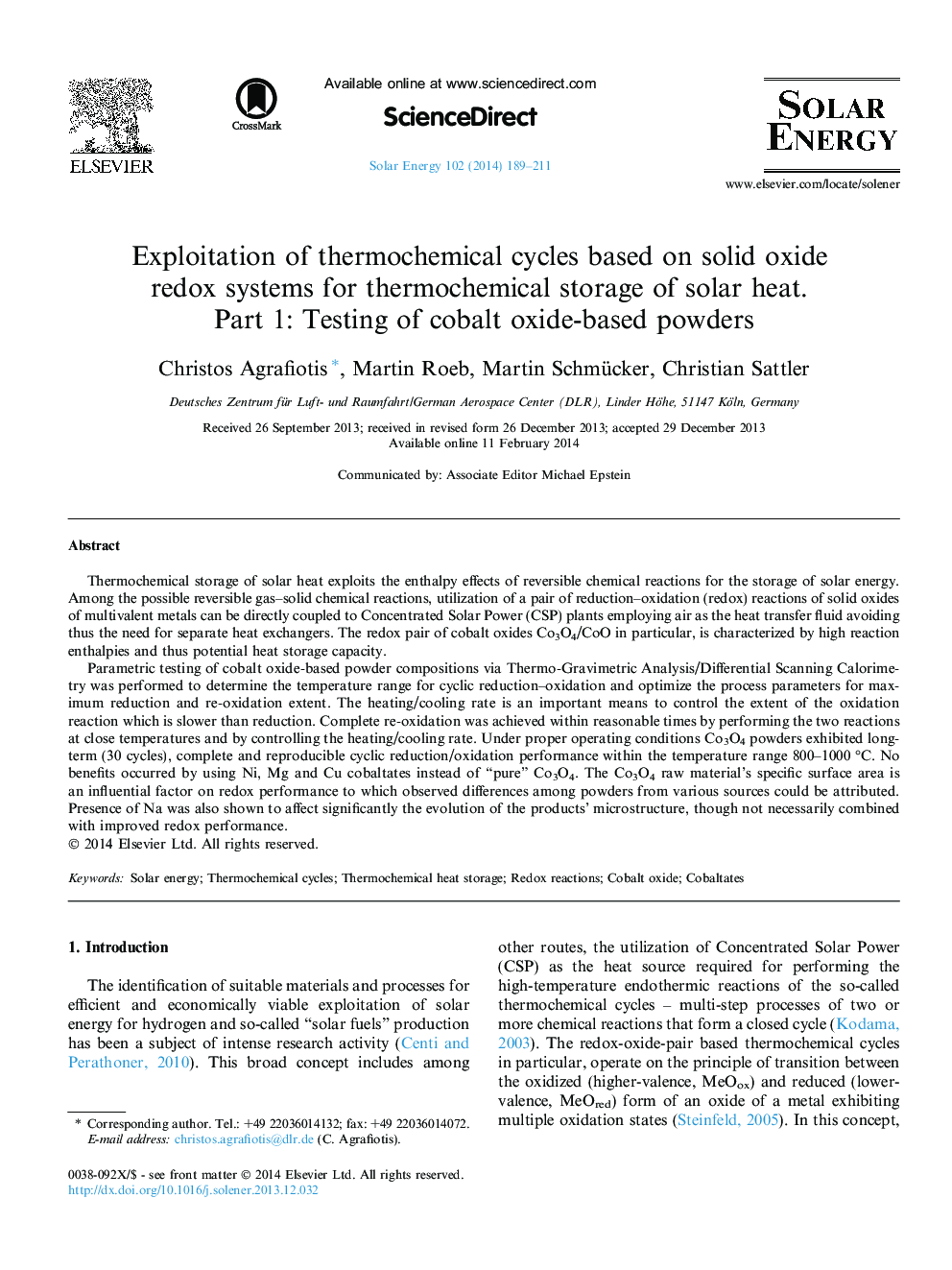| Article ID | Journal | Published Year | Pages | File Type |
|---|---|---|---|---|
| 1550142 | Solar Energy | 2014 | 23 Pages |
•Redox reactions of multivalent metal oxides can be used for solar heat storage.•Co3O4 can operate in cyclic, thermochemical, complete redox mode between 800 and 1000 °C.•Redox performance of Co3O4 powders was affected by their surface area.•No benefits occurred by using Ni, Mg and Cu cobaltates instead of “pure” Co3O4.•Na additive affected products’ microstructure but not material performance.
Thermochemical storage of solar heat exploits the enthalpy effects of reversible chemical reactions for the storage of solar energy. Among the possible reversible gas–solid chemical reactions, utilization of a pair of reduction–oxidation (redox) reactions of solid oxides of multivalent metals can be directly coupled to Concentrated Solar Power (CSP) plants employing air as the heat transfer fluid avoiding thus the need for separate heat exchangers. The redox pair of cobalt oxides Co3O4/CoO in particular, is characterized by high reaction enthalpies and thus potential heat storage capacity.Parametric testing of cobalt oxide-based powder compositions via Thermo-Gravimetric Analysis/Differential Scanning Calorimetry was performed to determine the temperature range for cyclic reduction–oxidation and optimize the process parameters for maximum reduction and re-oxidation extent. The heating/cooling rate is an important means to control the extent of the oxidation reaction which is slower than reduction. Complete re-oxidation was achieved within reasonable times by performing the two reactions at close temperatures and by controlling the heating/cooling rate. Under proper operating conditions Co3O4 powders exhibited long-term (30 cycles), complete and reproducible cyclic reduction/oxidation performance within the temperature range 800–1000 °C. No benefits occurred by using Ni, Mg and Cu cobaltates instead of “pure” Co3O4. The Co3O4 raw material’s specific surface area is an influential factor on redox performance to which observed differences among powders from various sources could be attributed. Presence of Na was also shown to affect significantly the evolution of the products’ microstructure, though not necessarily combined with improved redox performance.
